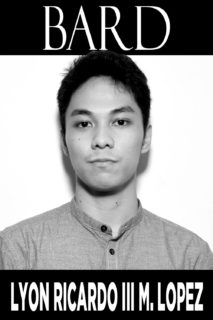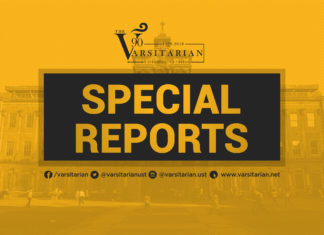TIME and time again, creativity has proven to be one of man’s greatest weapons against the evil in himself.
On Dec. 8, several artists gathered at the Cultural Center of the Philippines (CCP) for the signing of a manifesto against the abuse on human rights. “AHRT” (Artists for Human Rights), as the event was called, had several of our prominent artists holding an open forum on human rights violations.
The Commission on Human Rights Philippines, one of the co-organizers of AHRT, held other activities and fora on Dec. 10, closing the lineup of events with an evening concert reuniting folk singer Noel Cabangon and his former bandmates from Buklod, a group known for its protest songs in the ‘80s. Joining them were a new crop of singers, young and eager to experiment with musical forms and genres.
In other areas of Manila, people painted caricatures of the President and other government officials in misshapen forms and paraded them in rallies.
These were only a few of the activities happening around the metro held in celebration of the 70th year of the International Human Rights Day, proclaimed by the United Nations on Dec. 10, 1948.
In this connection, the Nobel Peace Prize and the United Nations Prize in the Field of Human Rights, are also awarded on Dec. 10.
As President Duterte’s anti-drug campaign rages on, leaving more corpses littering the streets every day, the call to stand for human rights has never been timelier. Even the Catholic church and its leaders have a clearer, more vocal stand on the issue
Yet even with all these large institutions backing the fight for life, our country and communities continue to struggle with greed and corruption that feed the flames of abuse so close to home. We take a fancy for tyrants and bullies – those whose duties it is to preserve human rights but who often are found on the other side–the oppressors and the victimizers.
How, then, do the people strike back?
The Marcos dictatorship, by far the record-holder (but now strongly contended by this government) of the most number of human rights abuse in the history of the country, triggered a wave of artists calling for change. On every front of the arts, individuals took up the pen, the brush, the camera or the song to strike at the tyranny seated in Malacañang.
Social realism became the brand of Philippine cinema, and directors such as the likes of Lino Brocka, Mike de Leon, Ishmael Bernal and Behn Cervantes came into prominence, directly and indirectly discussing Martial Law, bringing into the light the abuses and violence of the military.
In theater, the Philippine Educational Theater Association (PETA) used theater not only to educate but to give a voice to the mounting radical sentiment of the times. Either through classics, Shakespearian and original material, they started fitting in to their scripts underlying messages of change and revolution. The company performed in all sorts of venues, taking to the streets when they had to (and for the accessibility of the people), which eventually became a popular thing.
Literature and its writers could neither be silenced; they became among of the greatest threats to the ruling dictatorship. National artists Virgilio Almario, Nick Joaquin and F. Sionil Jose were at the forefront of progressive writers who tackled the socio-political issues of the day head-on.
Constancio de Guzman’s revolutionary song “Bayan Ko,” originally part of Severino Reyes’ romantic zarzuela, “Walang Sugat,” a seditious play against the American occupation, later became the cry for freedom during the Marcos era after a folksy rendition by Freddie Aguilar drew the song nearer to the heart of the masses.
The arts, at any given time, has always played a part in the shaping of humanity.
The reaction to Marcos’ action against the rights of the people resulted in his end, a creative, popular and passionate sentiment that would go down in history as the EDSA revolution.
It’s funny that the former first lady, Imelda Marcos, even tried to frame herself as the patroness of the arts and culture, only to find that art would be a key tool in ousting the Marcoses from the throne they’d held onto so tightly.
And now, we find ourselves facing a new yet oddly familiar threat. Today as a new breed of dictators stares us in the face, let the artist in every Filipino awaken the hope in our time. Let us not forget what our parents and grandparents struggled for not too long ago, what we as a nation have been robbed of. In the face of adversity, let us learn to be creative with our next move.













